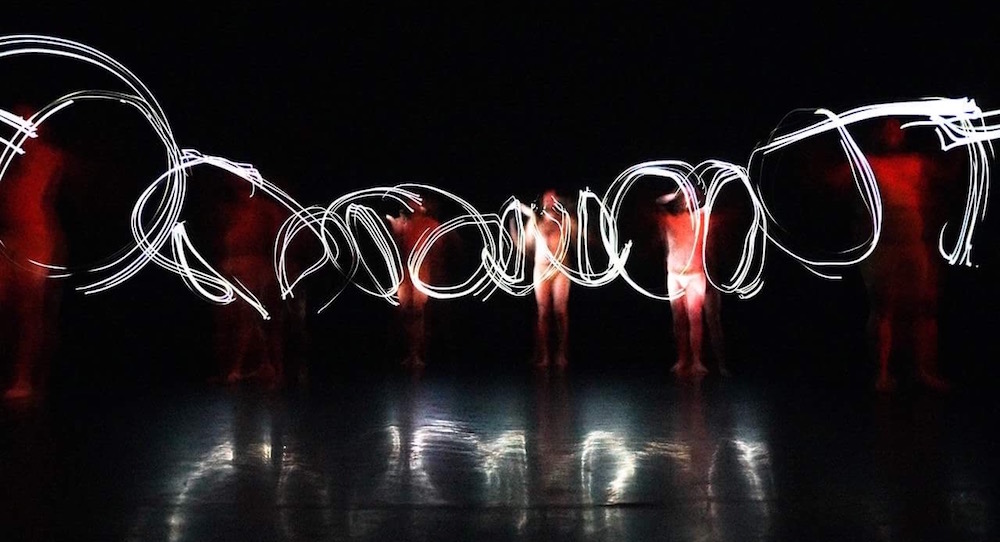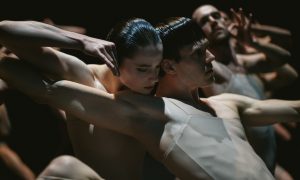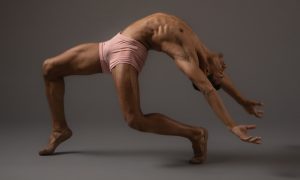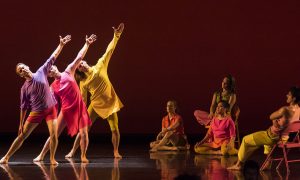The Dance Complex, Cambridge, Massachusetts.
March 31, 2018.
In a time of significant political and social turmoil, what role do the arts play? A mirror, catharsis, an outlet for representation or something else? How is any of that best done – specificity, concept, aesthetic focus or something else? No doubt, many artists in the zeitgeist of 2018 are asking these questions. There’s such a thing as biting off more than one can chew, taking on too much to speak about.
No doubt, that’d be an easy trap in which to fall amidst the multiple contentious conversations we engage in daily. Choosing one area to focus one’s art, particularly one in which there’s personal experience and passion, is arguably a wise approach to facing these questions.
Collaborators who share such personal experience, yet who bring their own flavor of it, can bring a breadth and depth to the art.
At the same time, the specificity of single focus can create a universality capable of connecting with all types of audience members. “that’s what she said…” – Dances from the Female Perspective, produced by Kristin Wagner, found poignancy through this approach of diversity within shared experience, carried further through visionary conceptual work and wonderful movement.
The first piece, Vanessa White’s Hopelessly Gazing, demonstrated true conceptual vision. The familiar rhythm of Beyonce’s XO began as tiny lights popped up on stage, the theater otherwise dark. More lights emerged, and the outlines of dancing bodies became more discernable. The human eye gradually adjusts to greater acuity in near-darkness, so it became easier to see the dancing as the piece went on.
I recognized and appreciated lovely circular movement, clear lines and levels in space (compellingly, at one point, alternating between high and low in a line). Another striking effect was quick flickering of lights along with an effect of the same nature in the music. Toward the end of the work, the dancers walked up the stairs of audience seating, revealing that the small lights were from their gloved hands.
Also clear were their topless costumes, the reason the piece was danced by men rather than women. The program explained how with town government regulations, White was not allowed to have women dance the piece in her envisioned costume, as “integral to the piece” as it was. Wagner also referenced the controversy in both her pre-show statement and program “Note from the Director”.
At a post-show Q and A, discussion around the matter evolved into that on the true nature of supporting and protecting women, and the activism that necessarily surrounds it. In this way, the intentional female focus of the night took on an energy that might lead to strengthening of grassroots action around women’s issues.
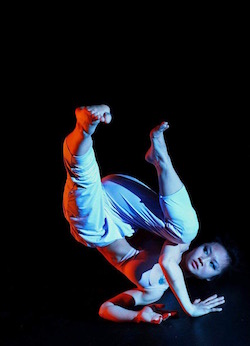
I.J. Chan’s ‘shell’. Photo by Golden Lion Photography.
Following the piece was shell, a solo danced and choreographed by I.J. Chan. She started facing backward at upstage left, in an expansive yet grounded side-lunge. Another duality continued throughout the piece, that of stable ease and agitated restlessness. Matching this was a combination of harmonious instrumental music and that far more new-age and edgy – the two sometimes played apart, sometimes interwoven. Human voices added a socioemotional component to this tension; I wondered if her interactions with others could bring this grounding or agitation, or if it was more internally-driven.
Either way, a costume of bra top and sweatpants carried a sense of unflinching authenticity, of her in her truest and unmanicured self. A feeling of raw and fearless attack of the movement bolstered that sense. Whether lounging deeply into a high and mighty barrel turn, or less virtuoistic joint-driven movement, she gave it her absolute all. Her focus and intensity never wavered.
Particularly striking were floor-based feats such as standing on her shoulders to flip over to a seat. She ended as she began, facing the back at upstage left, yet with lower lighting diffusely spotlighting her. Perhaps her condition continued, yet perhaps she could perceive it with a newly-formed honed vision.
The piece preceding intermission, Audrey MacLean’s I’m glad I exist (danced by MacLean, Grant Jacoby and Katie McGrail), was more theatrically-driven, yet no less impactful. Jacoby and MacLean began in simple standing, looking outward. With a tilt of her head and gaze downward, an air of an awkwardly silent social interaction became clear. Jacoby began peeling an orange he held, rinds falling into the pail at his foot.
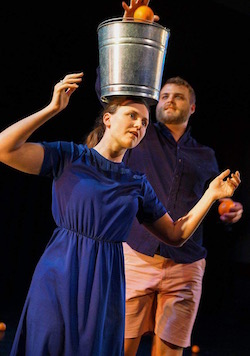
Audrey MacLean’s ‘I’m glad I exist’. Photo by Golden Lion Photography.
McGrail also had a pail at her feet, and an orange that she brought out from her back pocket. Instead of peeling and enjoying it, along with Grant’s character enjoying his (now munching nonchalantly), she put it in the crook of his elbow. Other oranges rolled from offstage, and she placed them on other places on his person that she could find.
This idea gained intensity as she ran offstage to fill her skirt with oranges and shower him with them. He casually munched the same orange all the while. The audience laughed at the good-natured absurdity. In a more sinister light, with the license of interpretation through a feminist lens, this action conveyed a woman offering and sacrificing more than a man needs or is in a space to fully appreciate.
The stage action then developed into movement, much of iterations of a simple yet compelling phrase – a step out, cross behind to turn and bend back into one knee, the other foot snaking to initiate further movement. Subsequent repetitions of the phrase allowed its layers to be unraveled and appreciated. Another character entered, McGrail, moving with solid strength yet true grace. Soon she held a third bucket high.
MacLean and Grant began filling her bucket with oranges, to the point that her struggle to hold it high became clear. She next balanced it on her thigh, held high with knee bent. Within the context of the piece, one could interpret this as the difficult balance women must face when they are granted the opportunities that men more traditionally enjoy, yet must still also attend to traditionally “female” responsibilities.
To end the piece, they all held their buckets high – Grant and McGrail’s buckets rather full, and MacLean’s emptier. They looked out at the audience as if imploring us to think critically, perhaps about what our own buckets hold or how we help fill others’ before we fill our own.
Pillow Talk opened the second half of the show, choreographed by Wagner and danced by her, Chan and Katie Van Wald. First noticeable was whispering. Discernable were words and phrases such as “what if he knows?”, “I wasn’t sure”, “sex”, “I told him”. Next came flashlights in the dancers’ face. One could interpret this as feminine internal monologue around sexually intimate situations.
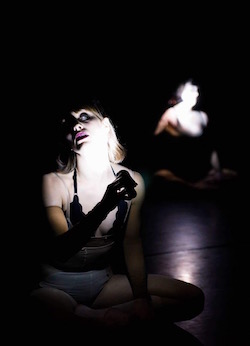
Kristin Wagner. Photo by Golden Lion Photography.
Action escalated into intricate movement phrases. In a repeated phrase (sometimes manipulated), dancers folded forward in a turned-out first position, arms reaching high above them. Further in this phrase, elbows led the torso upwards to battement seconde, which then swooped behind and then into a pirouette.
Wagner demonstrated an impressive ability to use technical movement as a base for that in her own signature. All three performers offered a simultaneous grace and strength that underscored the truth that women can be both soft and strong.
The show overall proved that possibilities for what women can be are boundless. In a time of a heated social and political discourse, Wagner used both diversity and common identity in the creation of art capable of meaningfully adding to that conversation, within one particular issue – diversity in the uniqueness of every involved choreographer and dancer, and common identity in self-identifying as female.
A post-show “Q and A” session, as well as Wagner’s program statement, revealed that these artists also critiqued, challenged, and supported each other throughout the process (such as through regular feedback sessions). As a result of this approach, I don’t think any audience member walked away quite the same. It felt impossible to not have some sort of perspective shift. Sometimes change begins with seeing what is with new eyes.
By Kathryn Boland of Dance Informa.


